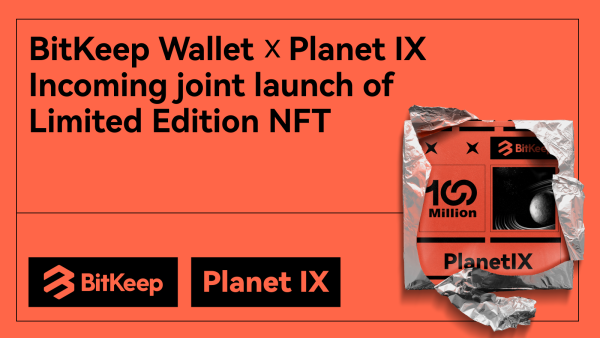Binance to convert $1B BUSD recovery funds into ‘native crypto’ – Cryptopolitan

Binance crypto exchange has announced that it will convert $1 billion in Binance USD (BUSD) to Bitcoin (BTC), Ether (ETH), BNB coin (BNB) and other tokens to help the market. The failure of three major cryptocurrency-backed banks, Silicon Valley Bank (SVB), Silvergate Bank and Signature Bank, saw stablecoin USDC fall as low as $0.87 from its benchmark of $1.
Binance CEO lays steady plans as banking fears rise
Binance CEO and co-founder Changpeng (CZ) Zhao tweeted March 13 that, in light of “changes in stablecoins and banks,” the exchange will convert the remaining $1 billion in its Industry Recovery Initiative into “native crypto.”
Afterwards, he published links to the transaction hash ID for BTC and ETC and stated that $980 million was moved in 15 seconds for a transaction fee of $1.98. The action probably contributed to increased buying pressure.
On Monday, during Asian hours, Bitcoin passed $22,500, while ether reclaimed the $1,600 market. According to CoinGecko data, BNB surged over 10% to trade above $300, establishing new highs in the past two weeks.
The move came as the crypto market suffered another blow in the early Asian hours when US regulators shut down crypto-friendly Signature Bank, adding to market stress.
Regulators shut down Silvergate early last week, followed by the failure of Silicon Valley Bank on Friday night, sending markets into a tailspin over the weekend as investors rushed to protect their capital.
The majority of the crypto community supported the move, although some questioned why more assets were not considered. However, there is no conclusive evidence that the market will maintain its current value following news of the Silvergate closure and wider market turmoil.
Some praised the decision, calling it “pure gold”, and suggested that stablecoins be pegged to alternative currencies:
However, others questioned the decision to sell BUSD, a supposed stablecoin, and convert it into more “volatile” assets.
Circle, the company behind USDC, disclosed on March 10 that it has approximately $3.3 billion tied up in the failing SVB, which caused the first de-pegging event. But by March 13, USDC had returned to its $1 peg and now hovers around $0.99.
Binance has over $70 billion in crypto assets
On Twitter, Zhao commented on current events. He assured investors and market enthusiasts that Binance had no relationship with Silicon Valley Bank. The decline of cryptocurrency-focused banks such as Silvergate and Signature Bank has contributed to market anxiety.
There are concerns about bank runs; crypto enthusiasts advocate moving funds to centralized exchanges. Obviously, this presents several complications. Zhao has even suggested that Binance might buy a bank.
Despite all the turmoil, Binance has performed well. The majority of the exchange’s assets are Ethereum and BSC, totaling more than $74 billion.
The largest asset held by the exchange is BNB, which accounts for 29.55 percent of its total assets. This is followed by USDT (21.51%) and BTC (15.21%). In addition, 11 tokens were added to the proof-of-reserves (PoR) system, including Dogecoin (DOGE), the Curve DAO token (CRV), and 1inch (1INCH).
USDC’s instability had a domino effect on other stablecoins, including DAI, USDD and FRAX, which also lost their $1 position.
Since the events began to unfold on March 10, the entire crypto industry has been on edge as to what will happen next. Twitter users have claimed that there is no one left to bank crypto companies.
Are stablecoins dying?
In recent months, the crypto world has been rocked by the volatility of stablecoins, and many investors have wondered if these digital assets are dying out.
Stablecoins are cryptocurrencies designed to have a stable value, often pegged to a fiat currency such as the US dollar or euro. This stability makes them an attractive alternative to traditional cryptocurrencies such as Bitcoin, whose value can fluctuate dramatically. However, recent events have cast doubt on their ability to maintain stability.
One of the most widely used stablecoins, USD Coin (USDC), has recently experienced a significant drop in value. This has caused concern among investors who previously saw stablecoins as a safer and more stable investment option than other cryptocurrencies.
This has led some analysts to question whether stablecoins are dying out and whether they can be trusted as a stable investment option in the future. Despite these concerns, some experts argue that stablecoins remain valuable assets for investors and that the recent fluctuations in value simply reflect the broader volatility of the crypto market.
According to some analysts, Stablecoins are still a valuable tool for investors who want to secure their positions in the crypto market. While they may not always maintain their link to the US dollar or other fiat currencies, they can still offer a degree of stability unmatched by other cryptocurrencies.
However, others remain skeptical about the future of stablecoins, arguing that their recent instability undermines their value as a reliable investment option. As the crypto market continues to develop and mature, it remains to be seen whether stablecoins will be able to maintain stability and continue to attract investors.
























